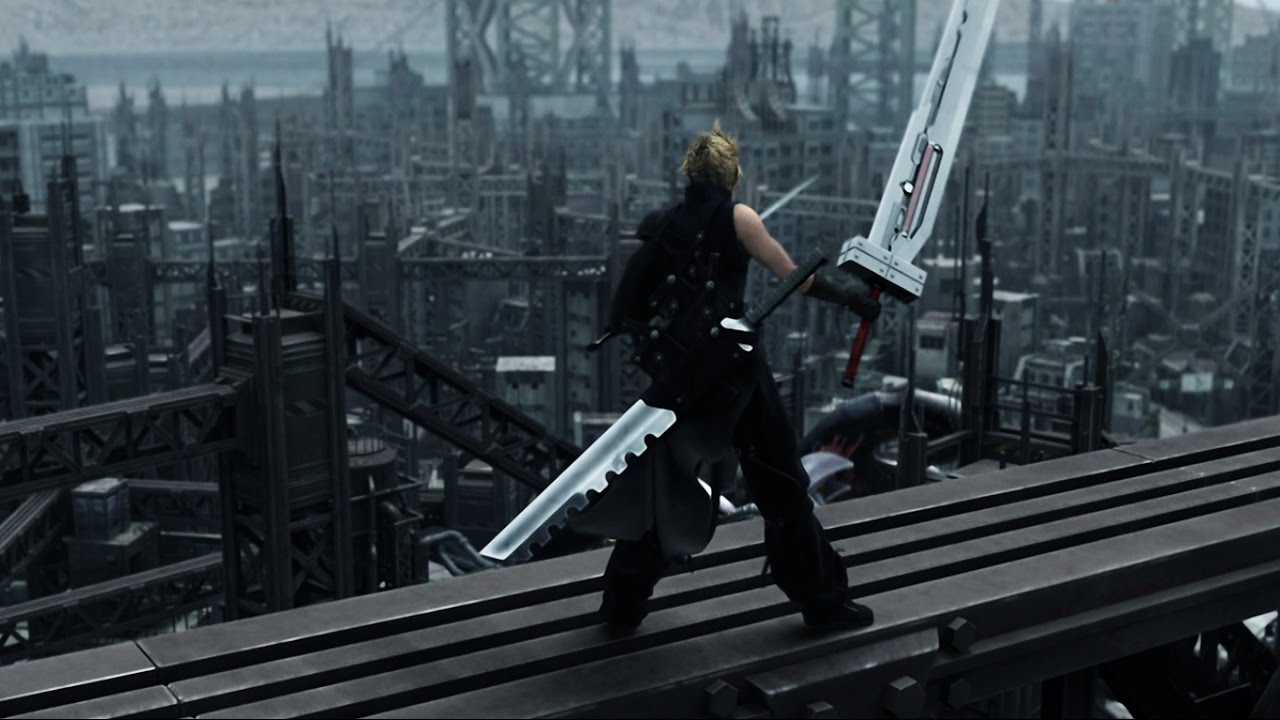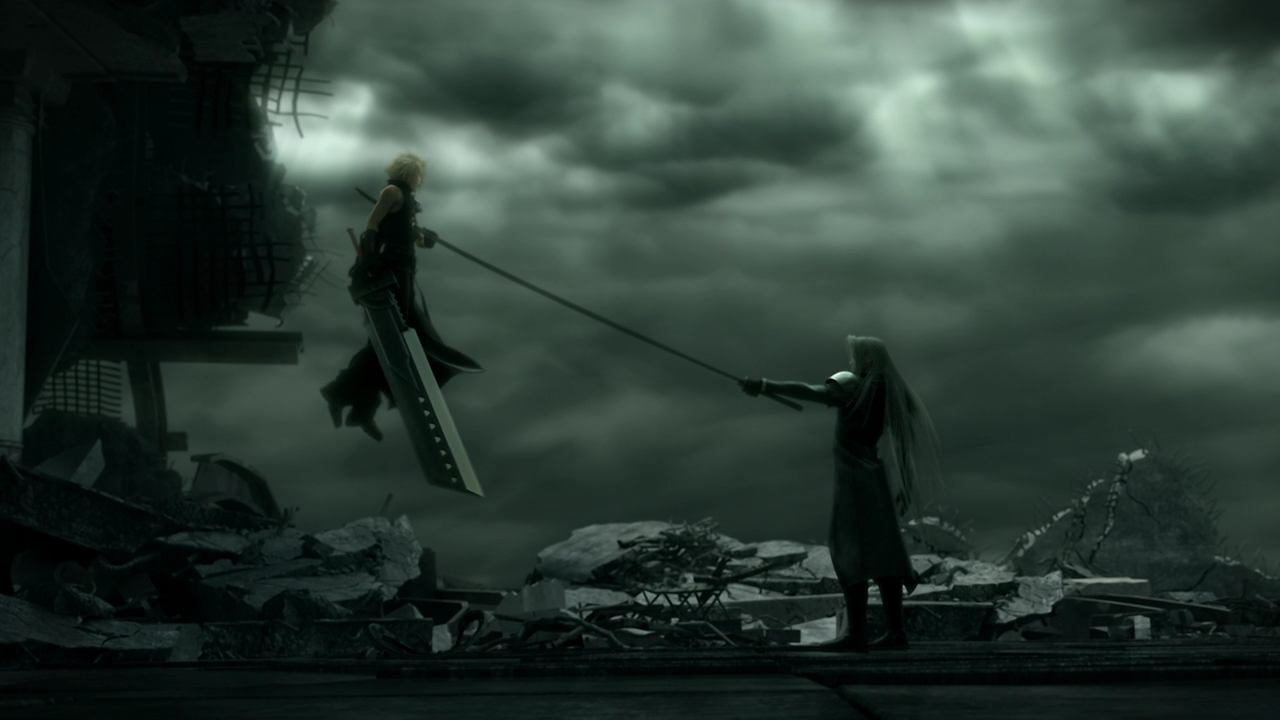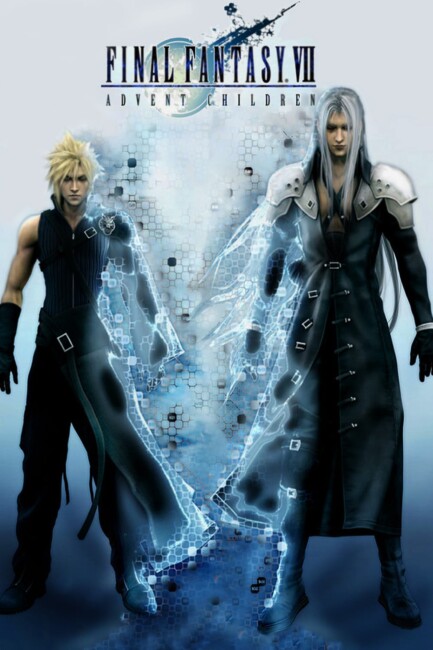Japan. 2005.
Crew
Director – Tetsuya Nomura, Co-Director – Takeshi Nozue, Scenario – Kazushige Nojima, Producers – Yoshinori Kitase & Shinji Hashimoto, Music – Nobuo Uematsu, Animation Supervisors – Yoshihiro Kitano & Kouichiro Shiratori, Visual Effects Supervisor – Koji Tanaka, Art Direction – Yuusuke Naora, Mechanical/Creature Design – Takayuki Takeya. Production Company – Square Enix.
Plot
It is two years after a massive battle between the former soldier Cloud Strife and the superhuman Sephiroth. The Shinra Electric Power Company had found a means to tap into the Lifestream that surrounds the world but in the midst of the battle, the planet fought back. In the aftermath of this, the inhabitants of the city of Midgar have been left infected with a strange blight that has been named geostigma. Rufus Shinra, the former head of the Power Company, wants to employ Cloud Strife to investigate the disappearances of children who are infected with geostigma. Behind the abductions are a group of thugs led by Kadaj who are seeking the remnants of the Mother that gave birth to them. Cloud goes on the trail of Kadaj after they abduct two children in the care of Aerith Gainsborough. This leads him to the Forbidden City and a massive battle in the streets and skies of Midgar as Kadaj unleashes a monster and seeks to incarnate the spirit of Sephiroth inside himself.
Final Fantasy VII (1997) was the most popular of the Final Fantasy computer games from the Japanese company Square. So far, the series extends all the way up to Final Fantasy XIV (2010). (Although, trying to follow the numbering of the games is confusing as some of the games have their own sequels and none are tied together particularly well in terms of plot, as witness their ability to change between fantasy and science-fiction with differing instalments). Final Fantasy VII takes place inside the futuristic city of Midgar where one can play a variety of characters with different powers as they tackle the totalitarian Shinra Electric Power Company and as the hero Cloud Strife takes on the evil Sephiroth and his plans to damage the planet in order to gain godlike powers. Final Fantasy VII was celebrated when it came out for its incredible graphics and the complexity of its storyline over what had gone before in gaming. Further such confusion was created by the subsequent film adaptation Kingsglaive: Final Fantasy XV (2016).
The Final Fantasy series had earlier given birth to an anime film with the excellent Final Fantasy: The Spirits Within (2001), even though the film bore no relation to any of the games. To next come across a film entitled Final Fantasy VII in videostores provides some confusion to non-gamers with many assuming that they had missed some five other sequels in between Final Fantasy: The Spirits Within and Advent Children. This gives clear indication that the filmmakers have made Final Fantasy VII: Advent Children directly for the gaming crowd, not for anime fans or the casual sampler of videostore shelves – Final Fantasy VII is a title that can surely only have significance to people who come to it from the game.

One must keep in mind that Final Fantasy VII: Advent Children is a film made for the gamer crowd in order to fully understand it. It is, for instance, a film that has been made by the people behind the game rather than a standard film adaptation of a videogame made by people who were fans of the original or looking for a film product that came with a built-in audience as most videogame-to-film adaptations are. Director Tetsuya Nomura had worked as a character designer on Final Fantasy VII and other incarnations of the game, and had not directed a film prior to Final Fantasy VII: Advent Children. (It should also be pointed out that the two Final Fantasy films are made by entirely different companies and production personnel and are not related beyond the name).
The major minus about this is that, not having played the Final Fantasy VII game and in that the film is a direct sequel to the events there, I found it extremely difficult to work out the milieu that we are meant to be in, who many of the characters are or frequently what was meant to be going on. It is only thanks to the miracles of Wikipedia and some people with far too much time on their hands who have gone and detailed biographies for every character in the game and film that I did eventually figure out who was who. However, the film is take no prisoners when it comes to making concessions to anyone who is not up with the (computer) game, which is something that you can only admire (in between scratching your head at trying to follow the plot).
The quality of animation is dazzling. The animation style follows on from the pioneering photorealistic quality that we saw in Final Fantasy: The Spirits Within, which gives a stunning depth of texture to characters’ faces and skin. Tetsuya Nomura directs some amazing action sequences, albeit borrowing heavily from The Matrix (1999) in attempting to conduct the animated equivalent of Bullet Time moves.

There are some enormously exciting scenes with the various members of the Avalanche force taking on a monster over the skies of Midgar and Cloud being tossed from hand to hand up into sky to enter into a giant blue ball of energy. This is topped by a breathlessly exciting motorcycle chase and fight sequence with combatants racing through the city and around a tunnel that comes with a dizzying kinesis and flips into Bullet Time slow-motion. This too is topped by a massively exciting climactic swordfight sequence with Cloud and Sephiroth fighting in mid-air as a building collapses around them, a sequence that is surely about as exciting as it is possible for anime to get.
On a plot level, Advent Children taps into the recurrent themes and cliches of anime – loner heroes with elongated features (one of the more amusing aspects is watching the hero who wields a sword that is even bigger than he is), epic redemption themes, strong eco-conscious concerns and the idea that the Earth has its own living lifeforce, heroes and villains with artfully arranged forelocks, and much epic-sized mass destruction. The action is rather pretentiously overlaid with operatic arias. As long as one does not require that a film make any narrative sense, all of this is exciting and expertly handled as anime goes.
Trailer here


